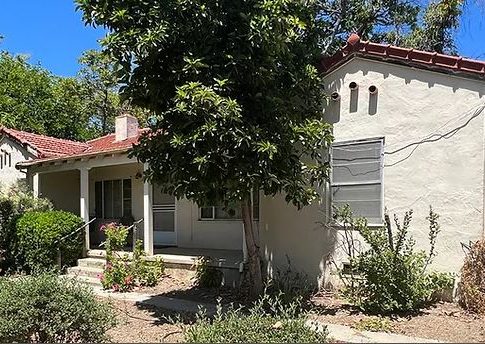By Zachary FR Anderson, AsAmNews Contributor
Like many families that live in the ‘Ohana Hunt Military Community in Honolulu, Native Hawaiian Mai Hall and her family were celebrating Thanksgiving when they began feeling ill.
“It could have just been food poisoning,” said Hall. “That’s why we didn’t get it checked out because we thought we were just ill. We didn’t trace it back to the water.”
Seven days earlier on Nov. 20, at the Red Hill Bulk Fuel Storage Facility, 14,000 gallons of jet fuel spilled into a water shaft connected to a well that provides Pearl Harbor-Hickam and the surrounding communities with fresh water.
In remarks given to the Hawaii State Legislature on Dec. 11, Deputy Commander of US Navy Pacific Fleet HQs Rear Adm. Blake Converse, said that on Nov. 23, he was ordered to begin investigating the spill and whether it was connected to an earlier one that happened on May 6 when 1,618 gallons of jet fuel leaked from the tanks.
LATEST STORIES
For the next several days following Thanksgiving, the Hall family continued to use their tap water which was making them and their pets feel ill. Then on Sunday, Nov. 28, eight days after the spill, at a neighbor’s birthday party, Hall and some of the other parents noticed that the water had started to smell.
“Me and ten other moms were like, ‘it smells like fuel at a gas station,’” said Hall.
The parents reported the odor to the community’s maintenance hotline. When no one responded to their calls, they reached out to Naval Command as well as the company that runs the Ohana Hunt community. That night, a community-wide email was sent out saying that the Navy was investigating the odor.
“There is no immediate indication that the water is not safe,” the email read.
However, base personnel was still skeptical of their water’s safety. Hall and her neighbors started using bottled water and as a result, Hall said that her family stopped feeling sick.
At another housing community on base, Deno Burton, a logistics management specialist with the Army Field Support Brigade (AFSB), said his family also stopped using the water after a neighbor shared results of a test he performed on his tap water revealed gasoline.
“I realized if next door is contaminated then mine has to be, too,” said Burton.
As calls continued to pour in about the water, Adm. Samuel Paparo, commander of the US Pacific Fleet, formed a Joint Crisis Action Team to address the problem.
No one in the Hawaii state government was contacted about the spill until Nov. 29 when the leader of the Action Team, Adm. Conserve, contacted the deputy director of the Hawaii Department of Health (DOH).
On Dec. 1, base personnel were instructed to stop using and drinking the tap water and bottled water was distributed to affected families which according to an email sent on that same day, was limited to 10 gallons per family per day.
The Military also began providing temporary housing in hotels for the estimated 1,741 families that were affected. Burton’s family decided to relocate to a hotel this coming Friday. For Hall’s family, relocation to a hotel would pose potential difficulty for their son who has disabilities. They opted to stay in their home and prepare meals, bathe and wash clothes, at the home of relatives who lived close by but were not affected.
“This whole ordeal with the Navy breaking the trust with military personnel impacts mission readiness,” said Hall. “How can [military personnel] do their jobs if they’re worrying about their families at home suffering?”
As of this writing, no branch of the military has provided displaced families a timeline of when it will be safe to return home.
Civilian communities have also been affected. Kapilina Beach Homes is a former base housing development and is connected to the same water system as Pearl Harbor-Hickam. Advocacy groups like the Oahu Water Protectors want to make sure that their voices are also heard.
“These military families are here for a short amount of time,” said Kawena’uloakala Kapahua who is an organizer with the Water Protectors. “When they’re rotated to different stations and they’re gone, we’re still going to be dealing with poisoned water.”
On Dec. 5, samples from the Red Hill water shaft contained levels of gasoline 350 times above the DOH’s safety levels. To prevent contamination of other nearby wells, Hawaii’s Board of Water Supply shut down two wells which provide Oahu with twenty percent of its fresh water.
The Halawa Shaft, the largest of the wells to be shut down, tested negative for gasoline but may be permanently out of use, according to a Dec. 13 Water Supply Board press conference.
On Dec. 7, the Hawaii DOH ordered the Navy to suspend operations at Red Hill and de-fuel the tanks. Sen. Brian Schatz alongside the other members of Hawaii’s congressional delegation issued a statement concurrent with the state’s order while also suggesting that the Environmental Protection Agency intervene.

Native Hawaiian activists who view the contamination as another example of the US military overstaying its welcome, staged demonstrations against the Navy throughout Hawaii. On Dec. 11, a crowd of 250 people staged a die-in on the step of the state capitol to protest the Navy’s actions and to demand that the Red Hill facility be shut down.
“This affects me because I am Hawaiian and this is my land and my ancestors have lived here for thousands of years,” said Kapahua. “These tanks have been in the ground for less than a century and they’ve already managed to destroy natural resources that we have been able to live in harmony with for generations.”
At a Dec. 12 protest in front of US Naval Command, Kapahua said he and other activists built a traditional altar or ko’a as a reminder to the military that they believe they are occupying stolen land.
“As long as their tanks are in the ground, we will be here to fight,” said Kapahua.
AsAmNews has Asian America in its heart. We’re an all-volunteer effort of dedicated staff and interns. Check out our new Instagram account. Go to our Twitter feed and Facebook page for more content. Please consider interning, joining our staff, or submitting a story, or making a contribution.










